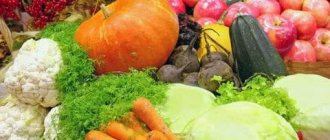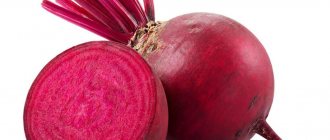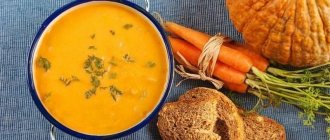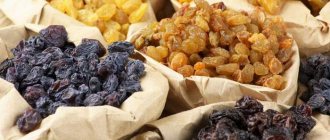It would be fair to call tomatoes a storehouse of health and attractiveness. This healthy vegetable is used in the preparation of various national dishes due to its amazing taste and nutritional value. By eating ripe fruits, you can improve digestion, increase appetite, and suppress the proliferation of harmful microorganisms that inhabit the intestinal tract.
When it comes to patients suffering from inflammation of the pancreas, eating tomatoes is of great concern. The main cause of inflammation of the gland tissue is often poor nutrition. The key direction in treatment is unquestioning adherence to diet, which serves as the most important condition for recovery. Even vegetables are subject to restrictions.
The effect of tomatoes on the body
Following strict nutritional recommendations protects patients from possible exacerbations of the disease. Most patients have no idea whether it is allowed to eat tomatoes with pancreatitis. Interest increases with the onset of summer, with the onset of the season of fresh vegetables. The effect of the fetus on the body is twofold.
Benefit:
- the pulp contains vitamins: C, A, D, K, B1-B6, B12, PP, folic and nicotinic acids, which strengthen the body;
- Selenium contained in the composition improves memory, thought processes, strengthens the immune system, and reduces the risk of developing cancer;
- normalizes metabolism due to the huge amount of microelements in the composition;
- delicate fiber in the skin has a positive effect on intestinal motility and digestibility;
- cleanses and improves intestinal microflora if you eat the fruit regularly;
- reduces the processes of putrefaction and gas formation in the intestines;
- promotes the removal of cholesterol;
- low calorie content helps normalize weight.
Harm:
- the pulp contains harmful substances that negatively affect the pancreatic parenchyma;
- difficult to digest by the stomach;
- excessively increases acid production in the stomach.
About the benefits of tomatoes
Tomatoes are vegetables rich in fiber, which is perfectly digestible by the body and healthy. In addition, tomatoes are valued for:
- Antibacterial and anti-inflammatory properties;
- Antidepressant effect;
- Stimulation of appetite;
- Ability to prevent blood clots;
- Normalization of pressure;
- Rejuvenating effect;
- Restoration, enhancement of potency.
Eating tomato is also recommended as a remedy:
- For weight loss due to the chromium content, which reduces hunger, and the low calorie content of the product;
- Improves the functioning of the heart, blood vessels and gastrointestinal tract;
- To remove waste, toxins and harmful substances from the body, thanks to potassium; strengthens bone tissue;
- To prevent anemia, strengthen the immune system due to the iron contained in tomato;
- Helps make it easier to endure winter cold;
- General strengthening and restoration of the body.
The ability of tomatoes to prevent the occurrence of malignant tumors has been studied. But this product also has many contraindications.
Is it possible or not?
When answering the question whether tomatoes are allowed if there are problems in the pancreas, it is worth considering the severity of the disease and stage. For any type of digestive disease, it is strictly forbidden to consume green, unripe tomatoes. Unripe fruits contain harmful toxins that make it difficult to digest food and create an excessive burden on the digestive organs, causing dysfunction.
For acute pancreatitis
It is absolutely contraindicated to take tomatoes during exacerbations. For the first few days, patients are only allowed to drink water and stay in bed. A week after the pain stops, patients are introduced to the menu with well-cooked and pureed vegetables.
It is forbidden to prescribe the dosage of the product yourself and overeat. The attending physician will prescribe the correct amount of food based on how you feel and the dynamics of your recovery. At this time, the saturation of the body with necessary nutrients is compensated by beets, pumpkin, cauliflower and other vegetables.
For chronic pancreatitis
In the initial phase of remission, when the pain stops bothering you, experts advise gradually expanding the list of foods you consume. It is highly not recommended to consume fresh tomatoes for pancreatitis if episodic attacks persist. It is advisable to bake the fruits in the oven or use a double boiler. Remove the skin from the finished product by grinding the mass to a pasty consistency.
Start taking tomato puree with one spoon, gradually increasing the dose with subsequent meals. Patients with chronic pancreatitis should eat only ripe tomatoes. You should not eat green or unripe tomatoes; even after heat treatment, there is still a risk of causing an exacerbation of the disease.
During the period without attacks of pancreatitis, you are allowed to eat one medium-sized tomato. If the remission phase is prolonged, you can use homemade tomato paste. When fresh, add tomatoes little by little to salads, seasoning them with vegetable or olive oil.
Fruits
As for fruits, it is undesirable to eat fruits that contain a large amount of acids. For this reason, the diet for pancreatitis of the pancreas excludes the consumption of sour apples. The acid contained in them has an irritating effect on the mucous membrane of the digestive tract and contributes to increased inflammatory processes in the gland.
Prohibited vegetables for pancreatitis
It is also important to consider the presence of coarse fiber in the fruit pulp. This is especially true during periods of exacerbation of the disease. During remission, it is allowed to consume a small amount of such fruits - you can eat one fruit per day. It is forbidden to eat pears, as they contain coarse granules that are difficult to digest. You can read more about these products here.
Table with a list of fruits that are allowed for pancreatitis and that are contraindicated in any case:
| Can be consumed | Possible only during remission | Not allowed during any period of illness |
| strawberry; papaya; sweet grapes; watermelon; melon; sweet varieties of apples. | Any fruits, vegetables and nuts, in small quantities after full heat treatment. | pears; citrus; sour apples; plums; peaches; mango; persimmon. |
As for bananas, it is better to avoid eating them both during an exacerbation and in remission of the disease. Nutritionists advise eating strawberries only in chronic forms of the pathology, when there are no pronounced clinical manifestations.
Tomato juice and pancreatitis
During an exacerbation of pancreatitis, tomato juice should not be consumed for the following reasons:
- Tartaric, oxalic and other acids included in the composition irritate secretory cells. The released enzymes have a destructive effect on pancreatic tissue, exacerbating inflammation.
Pancreas - Dietary fiber included in the structure of the vegetable aggravates diarrhea and bloating.
- The choleretic effect of the juice leads to the reflux of bile components into the gland ducts and activates the action of aggressive enzymes.
- The salt contained in the juice causes swelling of the gland tissue, which leads to increased pain.
Tomato juice for pancreatitis in the remission phase can be drunk, diluted with carrot and pumpkin juice, accelerating the recovery process. If pancreatitis has been in a chronic stage for many weeks, you can allow yourself to drink a glass of pure juice without adding salt.
How to choose
Unripe tomatoes contain toxic substances that persist even after heat treatment. Toxins can activate the inflammatory process and provoke an attack of pancreatitis.
For cooking, you should choose only ripe and fresh fruits.
For cooking, the patient should use only ripe and fresh fruits.
We recommend reading: Is garlic good for pancreatitis?
Tomato paste and ketchup for pancreatitis
The use of industrially produced ketchup and tomato paste in food is highly discouraged for patients with pancreatitis. During preparation, the composition includes various preservatives, spices, thickeners, starch and dyes that negatively affect the functioning of the gland. Chemical additives do not make food healthy and are undesirable for consumption even by a healthy person.
It is possible to occasionally take tomato paste during a period of long absence of exacerbations, exclusively from home production, in which no harmful inclusions were used. A similar product is prepared by long cooking (about 3-5 hours), using mainly ripe tomatoes, peeled and seeds removed.
Much to our chagrin, we will also have to exclude tomato preparations from the menu: marinades, pickles in their own juice and stuffed with various fillings. During cooking, the workpieces are exposed to additional components: acetic and citric acid, red pepper, garlic, salt and other seasonings.
Tomato recipes
Tomatoes for pancreatitis will diversify the patient’s diet and enrich it with useful substances. But the vegetable should be consumed in acceptable quantities, and dishes should be prepared according to the doctor’s recommendations.
Tomato salad
- Treat the fruit with boiling water.
- Finely chop.
- Add herbs, salt and vegetable oil.
Tomato with egg
- Cut off the tops of ripe tomatoes.
- Pour boiling water over the tomatoes.
- After 2-3 minutes, remove the peel and remove the pulp.
- Add salt and butter (as agreed with your doctor).
- Break the egg inside the prepared vegetable.
- Place the dish in a preheated oven.
- Bake for 10-12 minutes at +200°C.
A person who suffers from pancreatitis can cook a tomato with an egg.
Omelet with tomatoes and onions
- Heat a frying pan over high heat.
- Grease with oil.
- Add chopped onions and tomatoes to the pan and stir.
- Add salt and simmer over medium heat for 5 minutes.
- Beat the egg and pour the contents into the pan.
- Add greens if necessary.
- Remove from heat after the mixture thickens.
Baked in the oven
- Cut the tomatoes into several parts. The size of 1 slice should be such that the tomato does not fall with pulp onto the baking sheet.
- Line a baking sheet with parchment paper and sprinkle with olive or vegetable oil.
- Lay out the slices.
- Mix approved herbs and sugar.
- Sprinkle over vegetables.
- Add chopped garlic.
- Place in the oven, preheated to +120°C for 4-5 hours. If there is no convection mode, place a pencil between the door and the oven.
- Sterilize the jar and pour a small amount of sunflower or olive oil after the container has cooled.
- Place the finished tomatoes in a jar, pour oil over them and put them in the refrigerator.
You can bake tomatoes in the oven.
In its own juice
- Pour boiling water over the tomatoes and leave for 2-3 minutes.
- Quickly plunge into ice water to remove the skin.
- Sterilize the container for the workpiece.
- Chop the fruit, boil and grind through a sieve to obtain a homogeneous mixture.
- Place the liquid mixture on low heat to thicken.
- Add salt, sugar and mix well.
- Pour the resulting mixture into the prepared container.
We recommend reading: Is it possible to have yogurt for pancreatitis?
Summer soup
- Cut the potatoes into small cubes, add water and put on the fire to boil.
- Stew onions and carrots, add to potatoes.
- Mix finely chopped tomatoes and peppers (not hot) and place in a saucepan.
- Add salt if necessary and leave over medium heat for 5 minutes.
There are other recipes for delicious dietary dishes made from tomatoes, which, if consumed correctly, can enrich the body of a patient with pancreatitis with useful substances and speed up the recovery process.
What can you replace tomatoes with?
It is better to forget about tomatoes during an exacerbation, replacing them in the menu with healthy foods: carrots, pumpkin, sweet peppers, beets, zucchini, spinach, green peas, cauliflower, and other permitted vegetables.
Beets, which contain iodine, which normalizes gland function, are considered surprisingly beneficial for patients. It is recommended to take 150 g of the vegetable once a day, grated, half an hour before meals, daily. After two weeks, relief is noted. Such substitutes have a positive effect on the functioning of the digestive system and are allowed even for patients with diabetes, which often accompanies inflammation of the pancreas.
Relapses will not occur if you consume tomatoes and their derivatives in moderation, allowing you to maintain normal pancreatic function.











